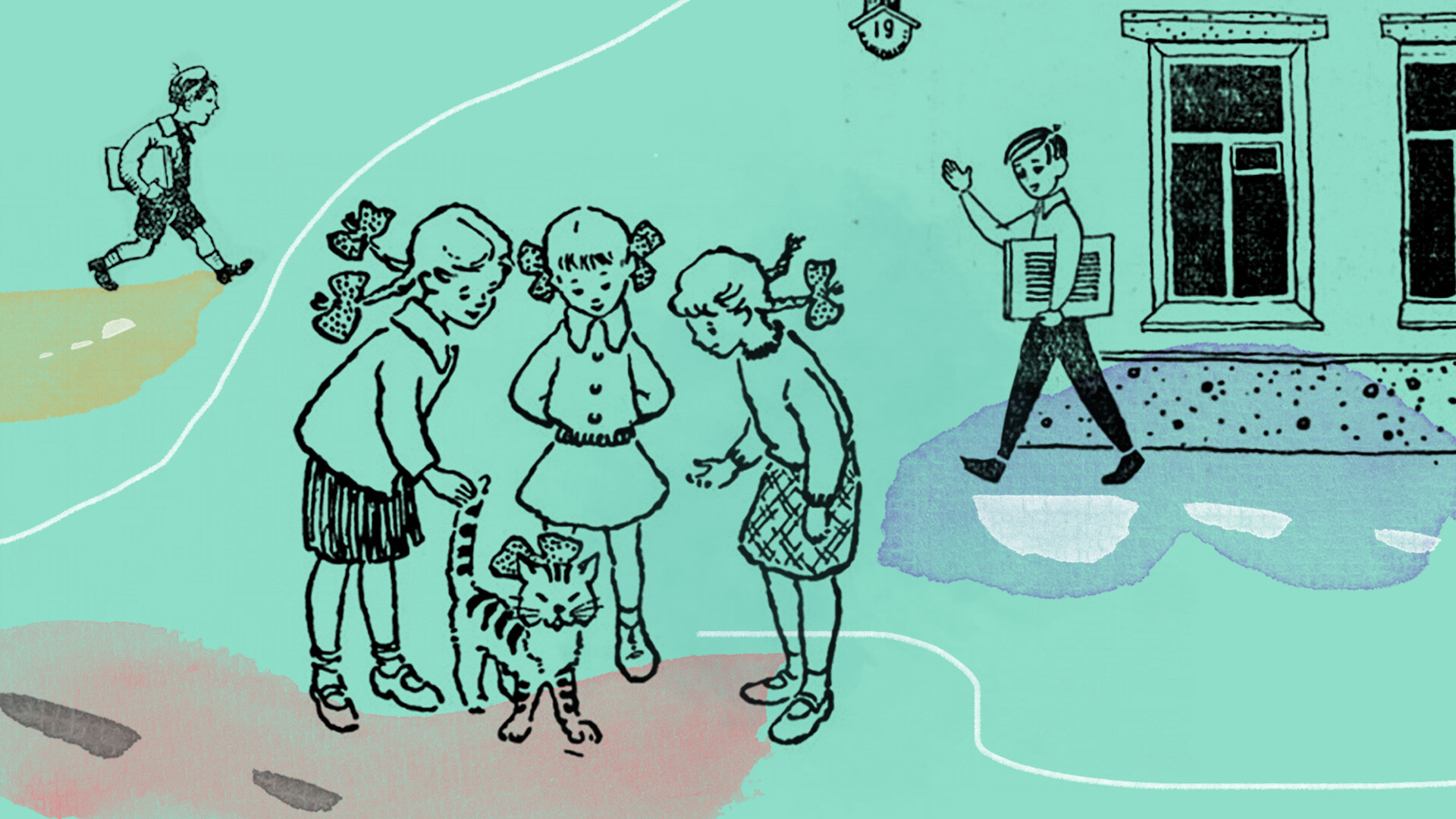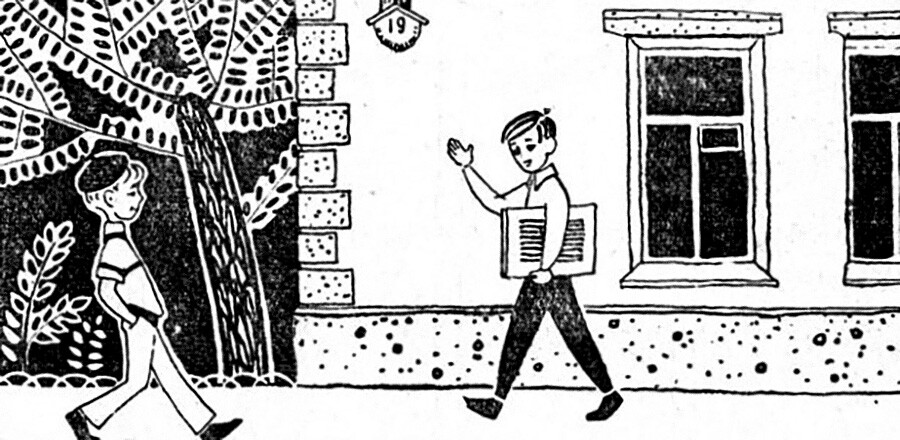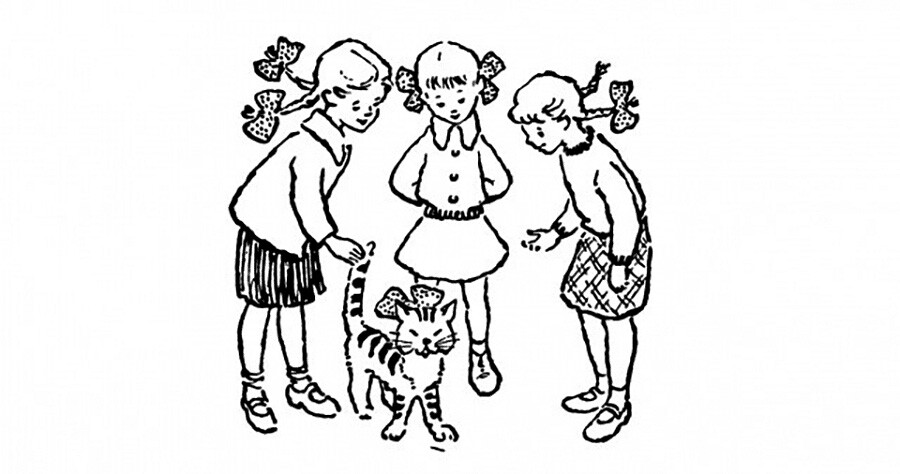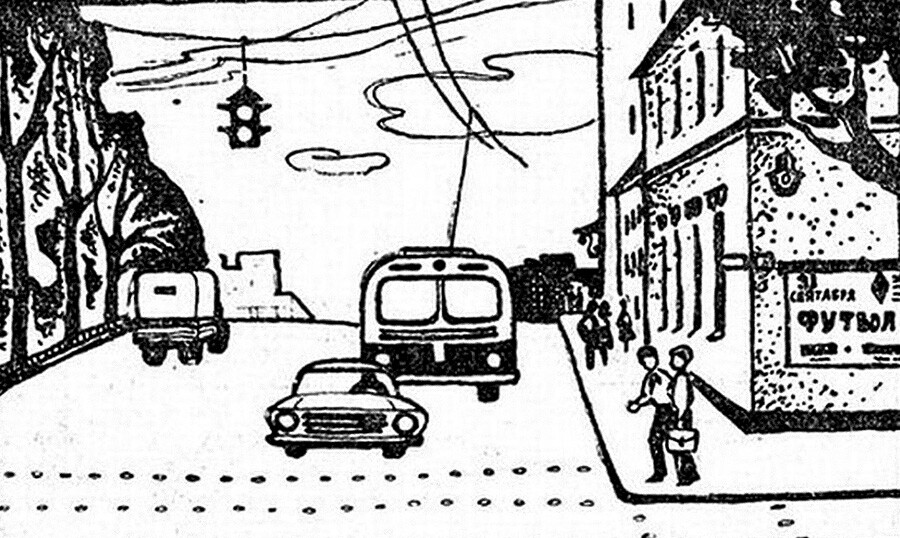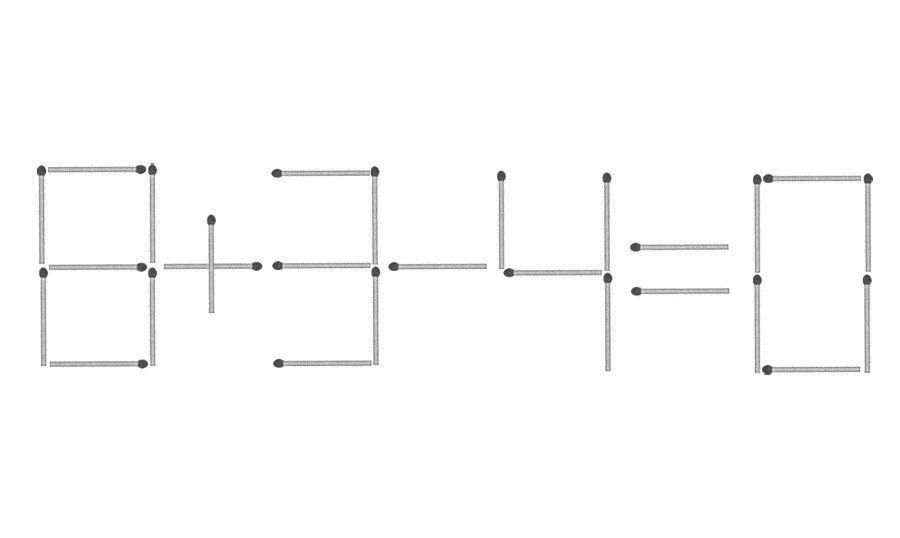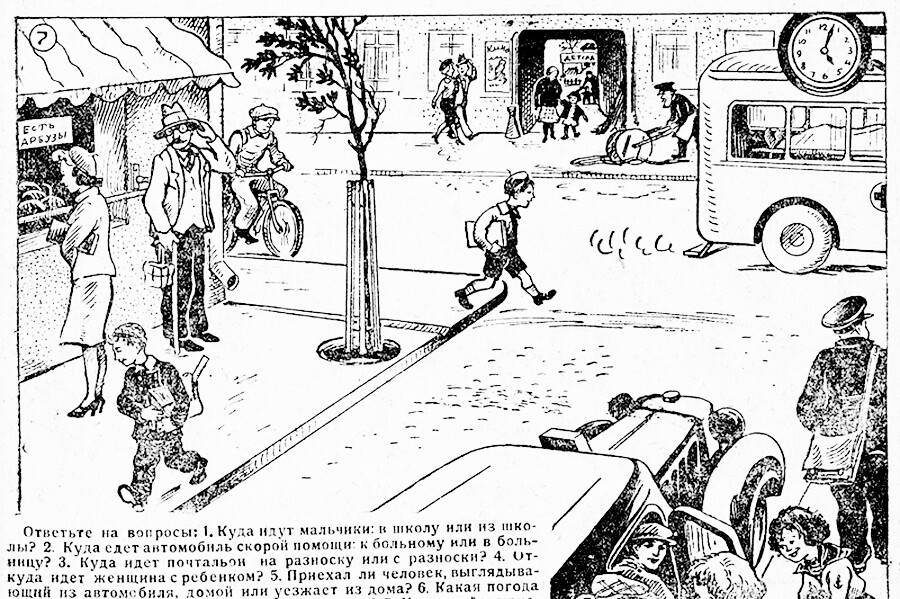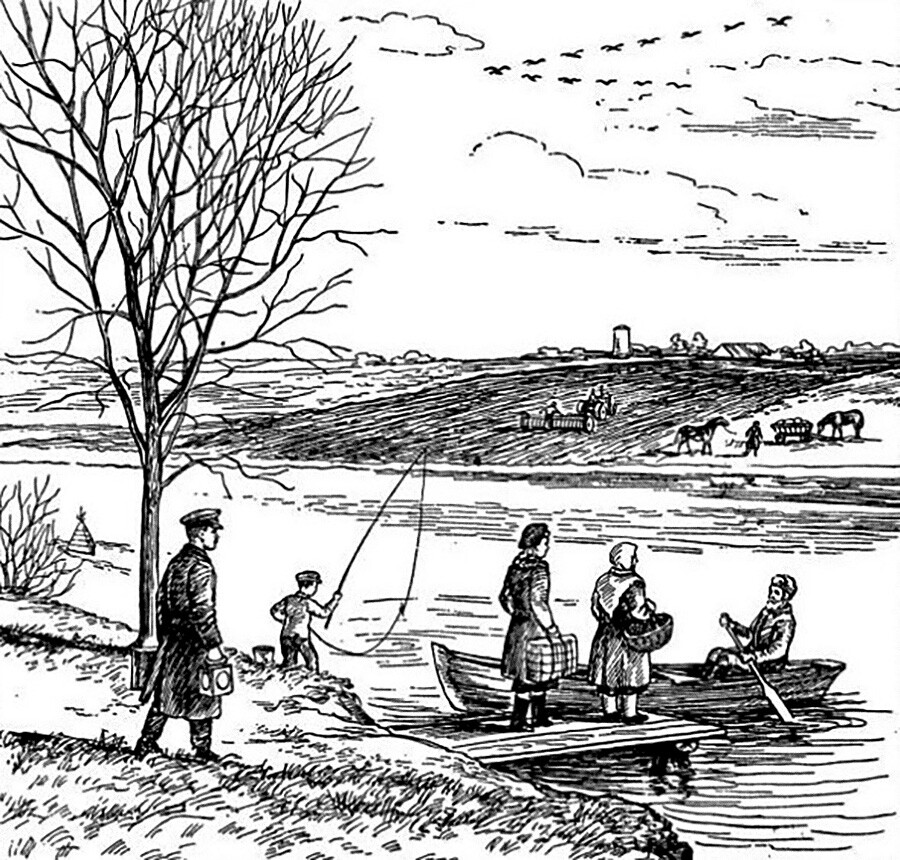Russia Beyond (Photo: Archive photo)
Soviet textbooks and magazines for teenagers often published various exercises that did not require knowledge of any school subjects, but rather, attention to detailveness and general erudition were required. Can you solve these exercises?
You need to look carefully at all the pictures and answer the questions.
1) Meeting in the street
Two friends met in the street:
- “Hey, Stepan! Where are you going?”
- “I'm going to house number 23,” says Stepan. “Where are you going, Petya?”
- “I'm going to my friend Vanyusha's house. He lives in house number 7," answers Petya.
Now determine: which one of these boys is Stepan and which one is Petya.
Answer: Stepan is the boy in the hat. We see that the house number in the picture is 19. If we walk from the first house on the street, the houses with odd numbers will be on the left side. The boy in the cap moves towards the houses with larger numbers and 23 is more than 19, therefore it is Stepan.
2) Whose kitty is it?
There are three girlfriends in the picture, from left to right: Ira, Tanya, and Galya. They have a cat called Murzyk with them. But whose cat is he? Who is Murzyk’s owner?
Answer: Murzyk belongs to Galya, the girl with one bow. She gave the other one to Murzyk.
3) Road traffic
Find five mistakes the artist made.
Answers:
- The trolleybus is missing one electricity rod.
- The traffic light has two lights instead of three.
- Houses numbered 0 do not exist.
- The cars are driving on the wrong side of the street.
- September 31st does not exist.
4) An exercise with matches
Such exercises were very popular. You only need to move one match to correct the equation.
Answers:
This problem can be solved in different ways:
- From the figure of eight, move the lower left match to the middle of the zero. It becomes: 9+3-4=8
- From number 8 remove the top right match and put it on top of the 4. The result becomes: 6+3-9=0
- In number 4, flip the horizontal match vertically and move it to the lower left corner of the 4: 8+3-11=0
5) An incident on the street
- Are the boys going to or from school?
- Where is the ambulance heading: to the patient or to the hospital?
- Is the postman on his way to deliver the mail, or has he already finished his work?
- Is the person looking out of the car leaving home or did he just arrive?
- Has it been raining recently?
- Is it windy outside?
- What time of year is it?
Answers:
- The kids are walking in different directions, which means that school is over. You can also tell by the clock (it’s 5:00 p.m.)
- The ambulance is driving to the hospital. You can see the sick person inside.
- The postman is on his way home from work: his bag is light, and it’s 5:00 p.m.
- The man returned home; he is greeted with joy.
- It hasn’t rained for a long time, otherwise the sweeper wouldn’t have been fiddling with the hose.
- It’s windy outside: a thin tree is leaning over, and a man is holding his hat.
- Autumn (probably September). You can tell by the watermelon stand and the schoolchildren in shorts on their way home from school.
6) The Crossing
- Is it late fall or early spring?
- Are the cranes flying north or south?
- What time of day is it happening?
- Is the river navigable?
- In which direction does it flow (north, south, west, east)?
- Is the river deep near the shore where the boat is standing?
- Is there a bridge nearby?
- Is there a railroad nearby?
Answers:
- There is sowing in the field. Autumn sowing is when the leaves are on the trees, but in the picture the trees are bare. So, it is early spring.
- Cranes fly from south to north in the spring.
- It’s early morning, people are rushing to work, shadows are falling to the northwest.
- The river has devices similar to buoys, which means that the river is navigable.
- From looking at the shadows of the objects and the way the water flows around the buoy, we can conclude that the river flows from north to south.
- The boy on the shore is fishing and the floater appears to be quite far away from the hook, which means that the river is deep.
- If the crossing is so well established, then there is no bridge.
- A railwayman stands at the crossing, meaning it is not too far.
7) The steamboat
- Is the steamboat going up or down the river?
- What time of year is it?
- Is the river deep here?
- How far away is the pier?
- Is it located on the right or left bank of the river?
- What time of day did the artist depict in the drawing?
Answers:
- The wooden triangles on which the buoys are mounted always point against the current. The steamboat sails up the river.
- The picture shows a flock of birds. They are flying in the form of an angle, one side shorter than the other. These are cranes, which migrate in flocks in spring and autumn. You can tell by the trees on the edge of the forest facing south. They always grow thicker on the side that faces south. Cranes are flying in a southern direction. So, the picture shows autumn.
- The river in this place is shallow: a sailor, standing on the bow of the steamboat, measures the depth of the fairway with a pole.
- Obviously, the steamboat is docking at the pier: a group of passengers, having taken their belongings, are prepared to leave the steamboat.
- By answering question 1, we determined which way the river flows. To understand where the right bank and the left bank are, you have to stand facing downstream. We know that the steamboat is docking at the pier. You can see that the passengers are getting ready to go out on the side where you are looking. So, the nearest pier is on the right side of the river.
- There are lanterns on the buoys. They put them on before the evening and take them off early in the morning. We can see that the shepherds are driving the herd to the village. From this, we conclude that the picture shows the end of the day.
Dear readers,
Our website and social media accounts are under threat of being restricted or banned, due to the current circumstances. So, to keep up with our latest content, simply do the following:
- Subscribe to our Telegram channel
- Subscribe to our weekly email newsletter
- Enable push notifications on our website
- Install a VPN service on your computer and/or phone to have access to our website, even if it is blocked in your country
If using any of Russia Beyond's content, partly or in full, always provide an active hyperlink to the original material.
